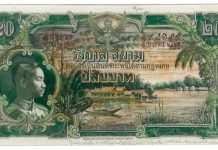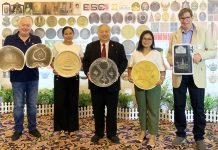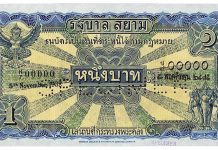 King Prajadhiphipok, Rama VII, was the son of King Chulalongkorn, Rama V, and the Brother of King Vajiravudh, Rama VI. Rama VII reigned from November 25, 1925 until March 2, 1935.
King Prajadhiphipok, Rama VII, was the son of King Chulalongkorn, Rama V, and the Brother of King Vajiravudh, Rama VI. Rama VII reigned from November 25, 1925 until March 2, 1935.
During the reign of Rama VII the Siamese revolution or Siamese coup d’état took place on June 24, 1932. The country ended almost 800 years of absolute monarchy and was transformed into a constitutional monarchy.
Rama VII signed a temporary charter on June 27, 1932 beginning with “the highest power in the land belongs to all the people”. He later signed and proclaimed the permanent constitution on December 10, 1933.
Rama VII left Thailand for Europe on December 12, 1933 for an eye treatment. During the next few years, Rama VII, the first Constitutional Monarch tried his best to exert a constructive influence on the process of political transition. But when negotiations failed, he abdicated the throne. He sent his letter of abdication from England on March 2, 1935 where he was recuperating from his eye operation.
In Rama VII’s abdication letter he wrote, “…I am whole heartedly willing to relinquish the powers vested in me from the times past to the general populace. However, I will not relinquish them to any one person or group so that it may be used absolutely without listening to the real voices of the people.”
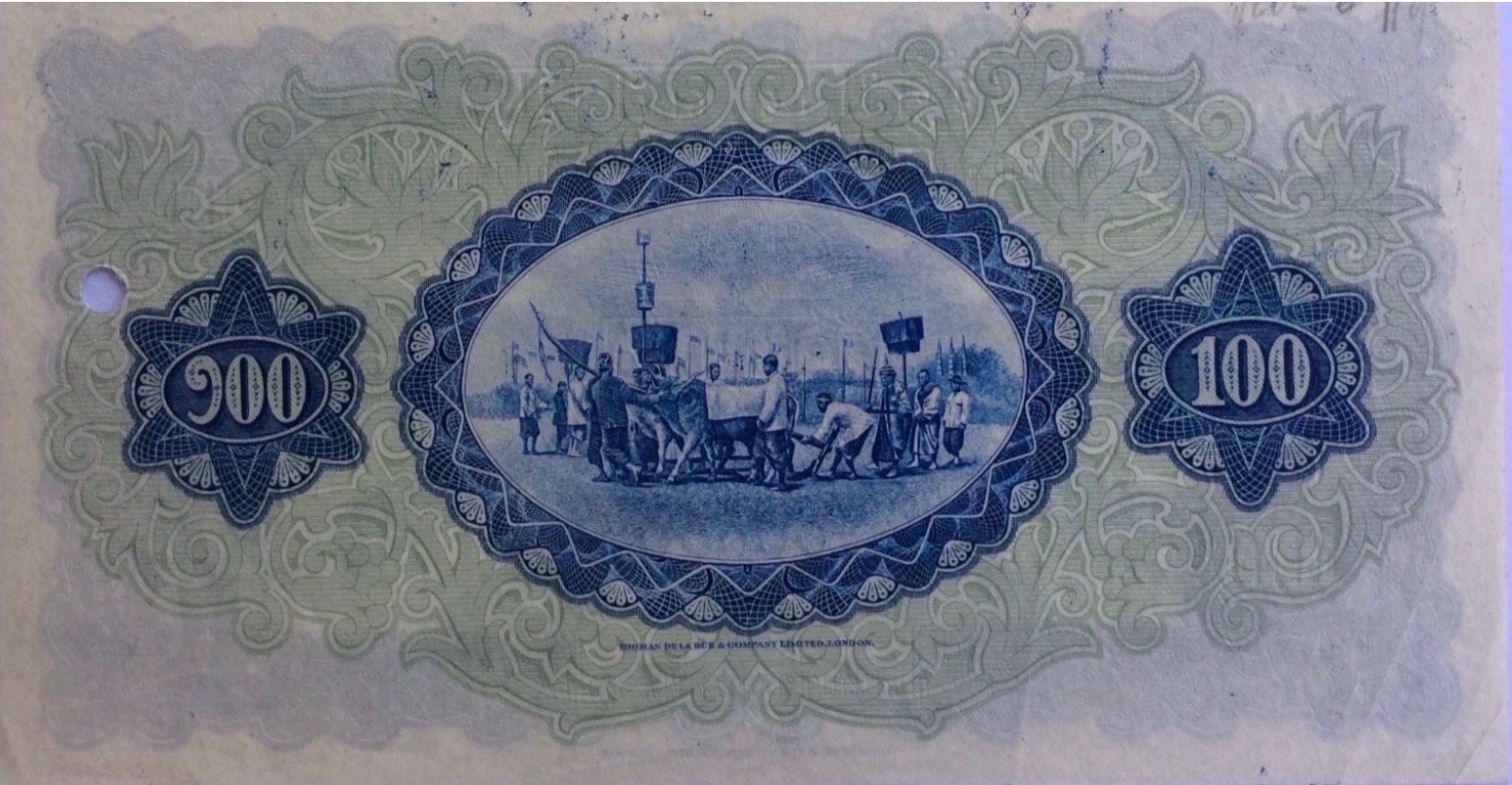
When Second Series of Thai Banknotes was to be designed the printer Thomas de la Rue & Company Limited London (TdlR) suggested to have a portrait incorporated on the banknotes. This would make it more difficult to produce counterfeits. TdlR did in 1924 produce hand-executed designs for the 5-, 10- and 20 Baht with an image portraying King Vajiravudh, Rama VI. The King did not give his permission; instead he wanted to have an image of the Royal Ploughing Ceremony on the back of the banknote.
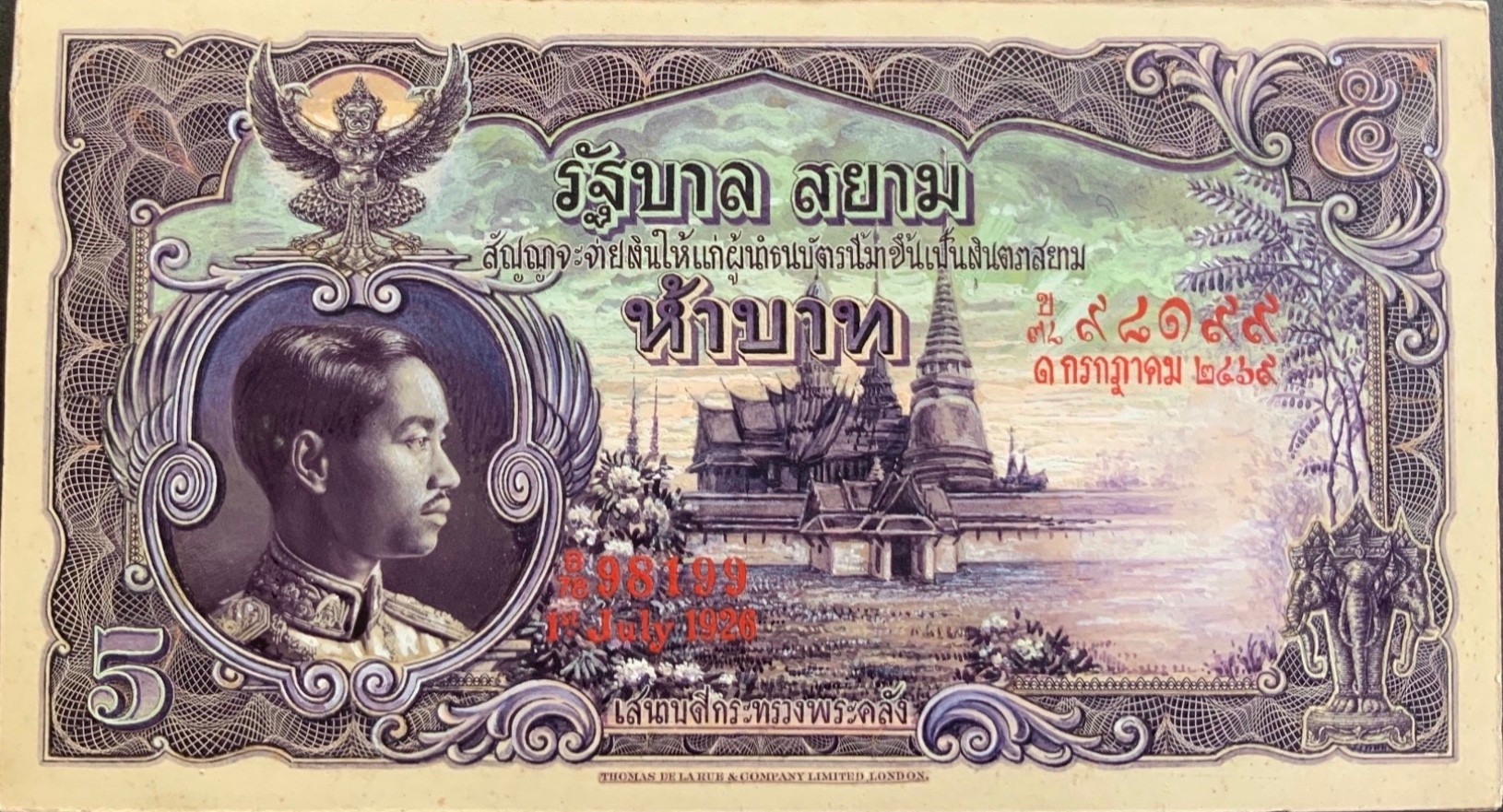
Rama VII was the first Thai King to give Royal permission for an image of his portrait to be printed on a banknote. The designs from 1924 were presented where the portrait of Rama VI was replaced with the portrait of Rama VII. But the King did not accept the design because he wanted an enface portrait.
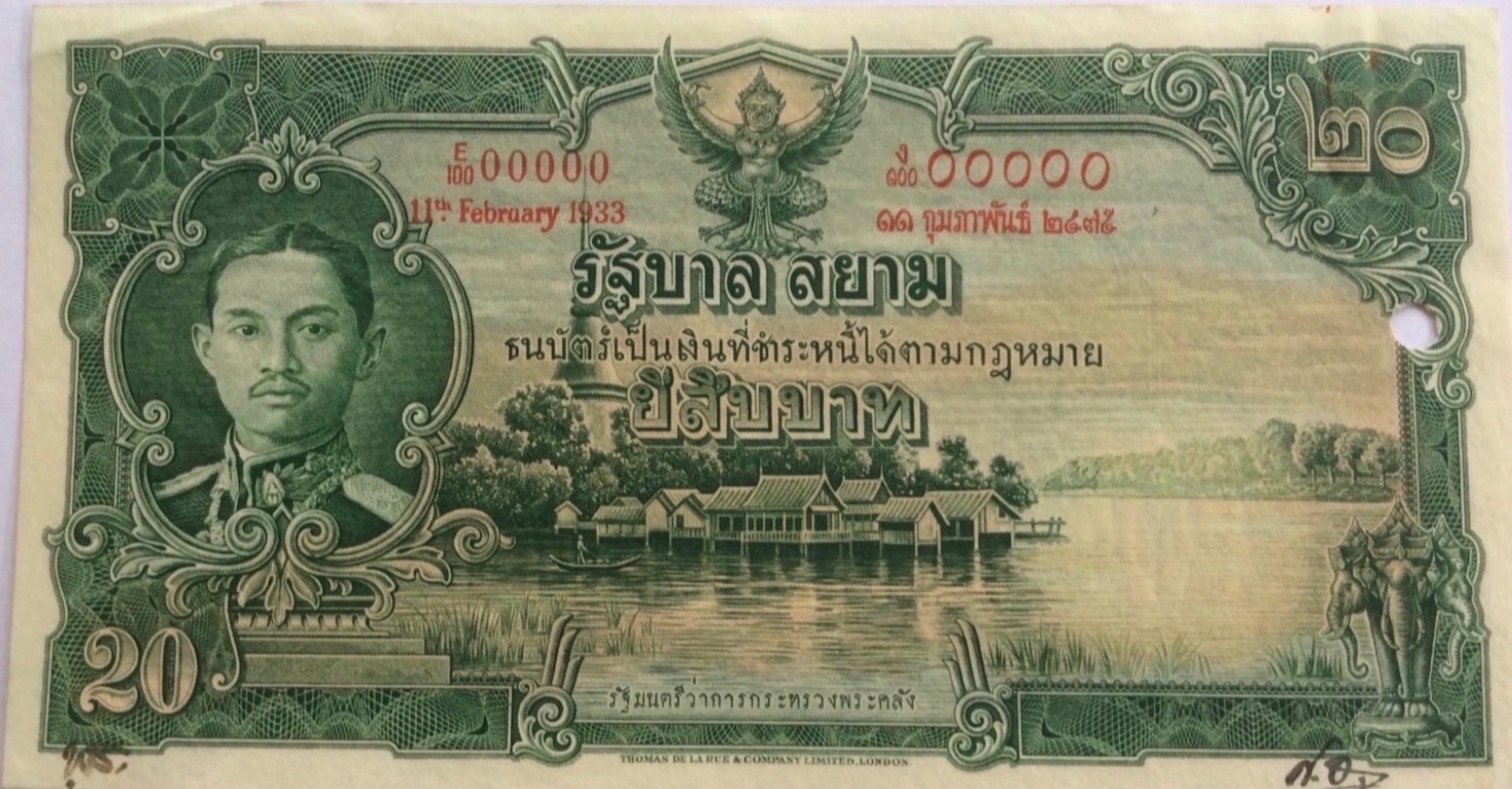
The change was done by photogravure and accepted by His Majesty and printed for circulation. This specimen 20 Baht banknote Third Series, Type I, is initialled as approved by Royal Ministry of Finance.
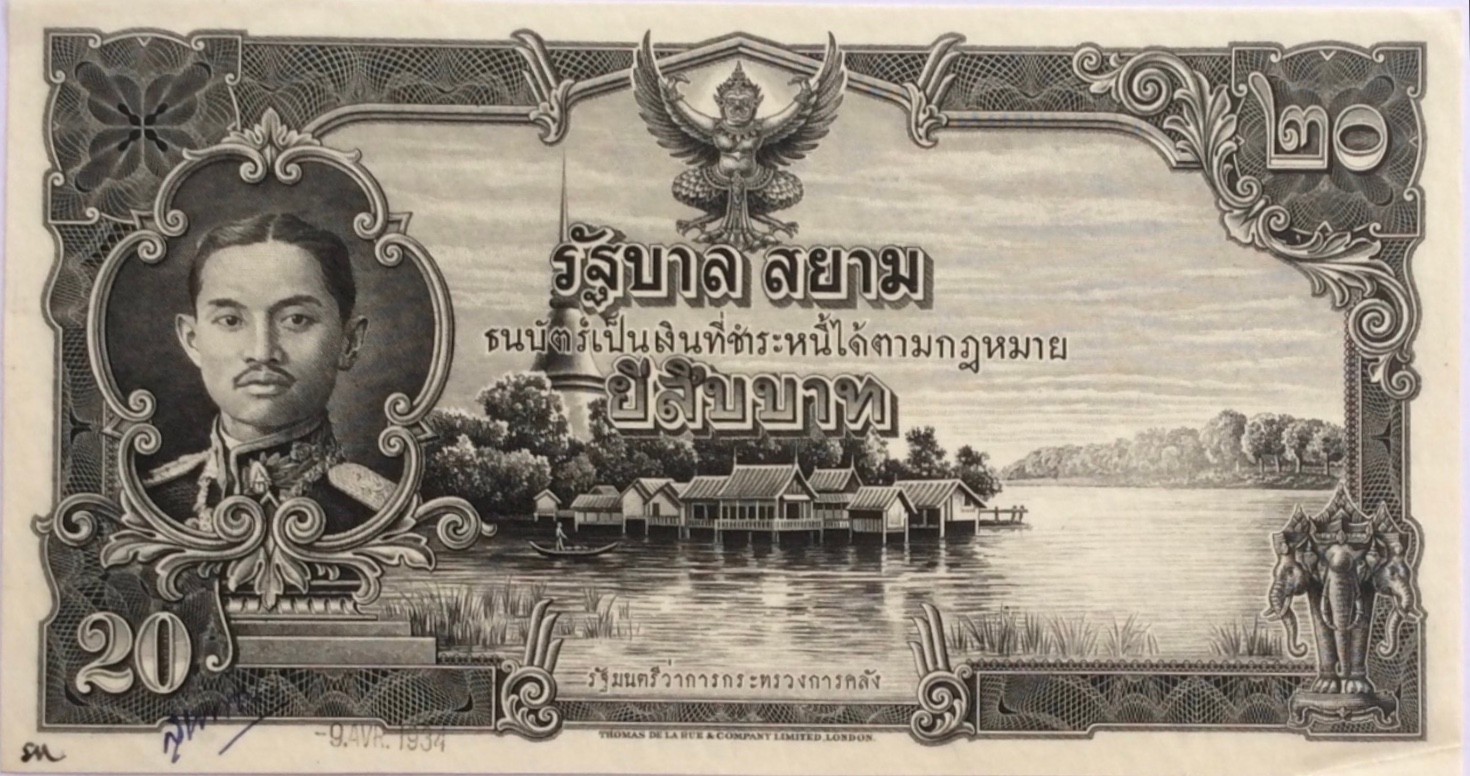
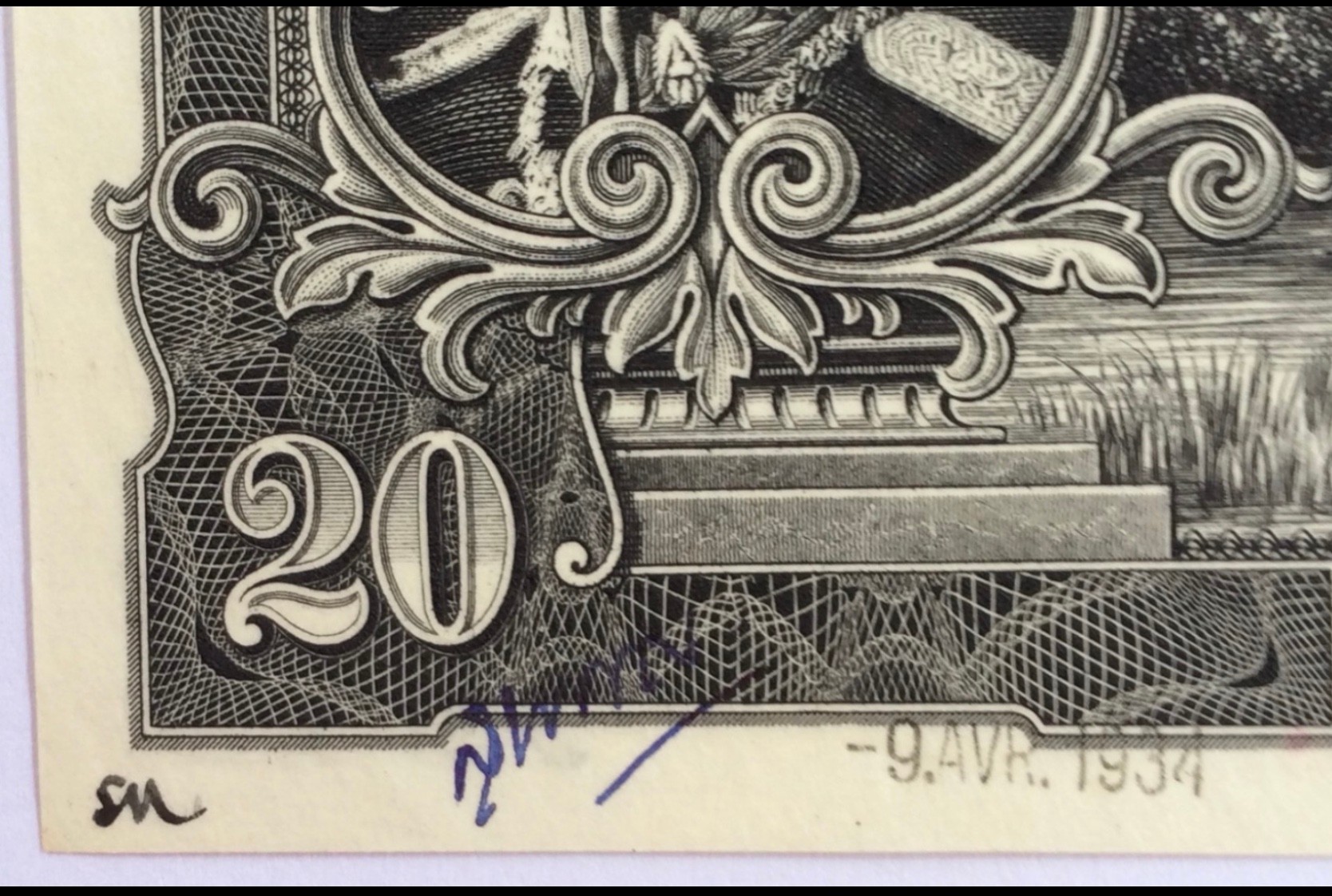 After the coup d’état the name of the Royal Ministry of Finance was changed to Ministry of Finance. In 1934 the printer TdlR was instructed to change the title of the Minister of Royal Finance to Minister of Finance since he was the one authorised to sign the banknote. The change was done on the plates for the 5-, 20- and never issued 100 Baht, and prints of the main front plates were sent to the Ministry of Finance to be initialled as approved.
After the coup d’état the name of the Royal Ministry of Finance was changed to Ministry of Finance. In 1934 the printer TdlR was instructed to change the title of the Minister of Royal Finance to Minister of Finance since he was the one authorised to sign the banknote. The change was done on the plates for the 5-, 20- and never issued 100 Baht, and prints of the main front plates were sent to the Ministry of Finance to be initialled as approved.
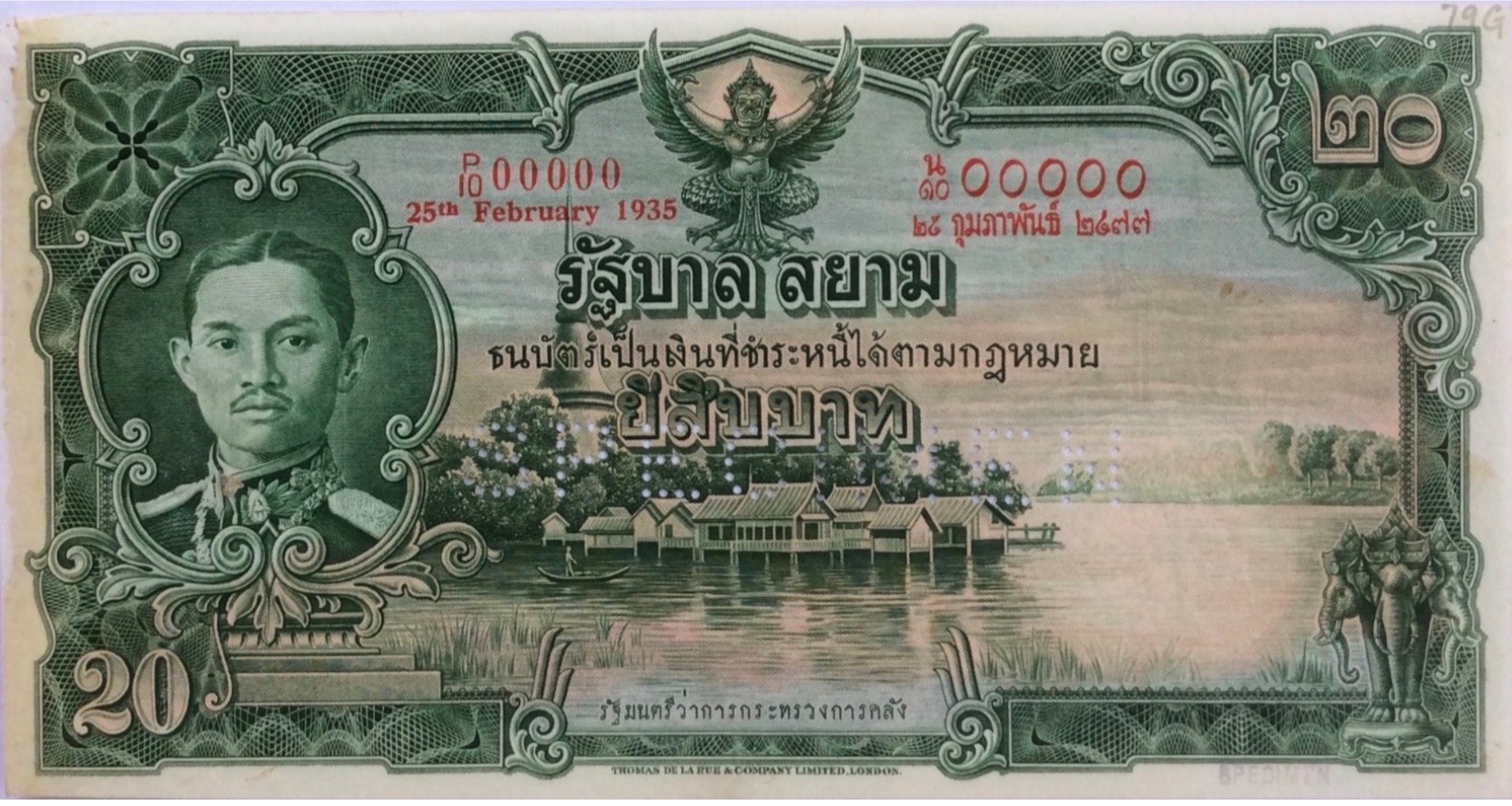
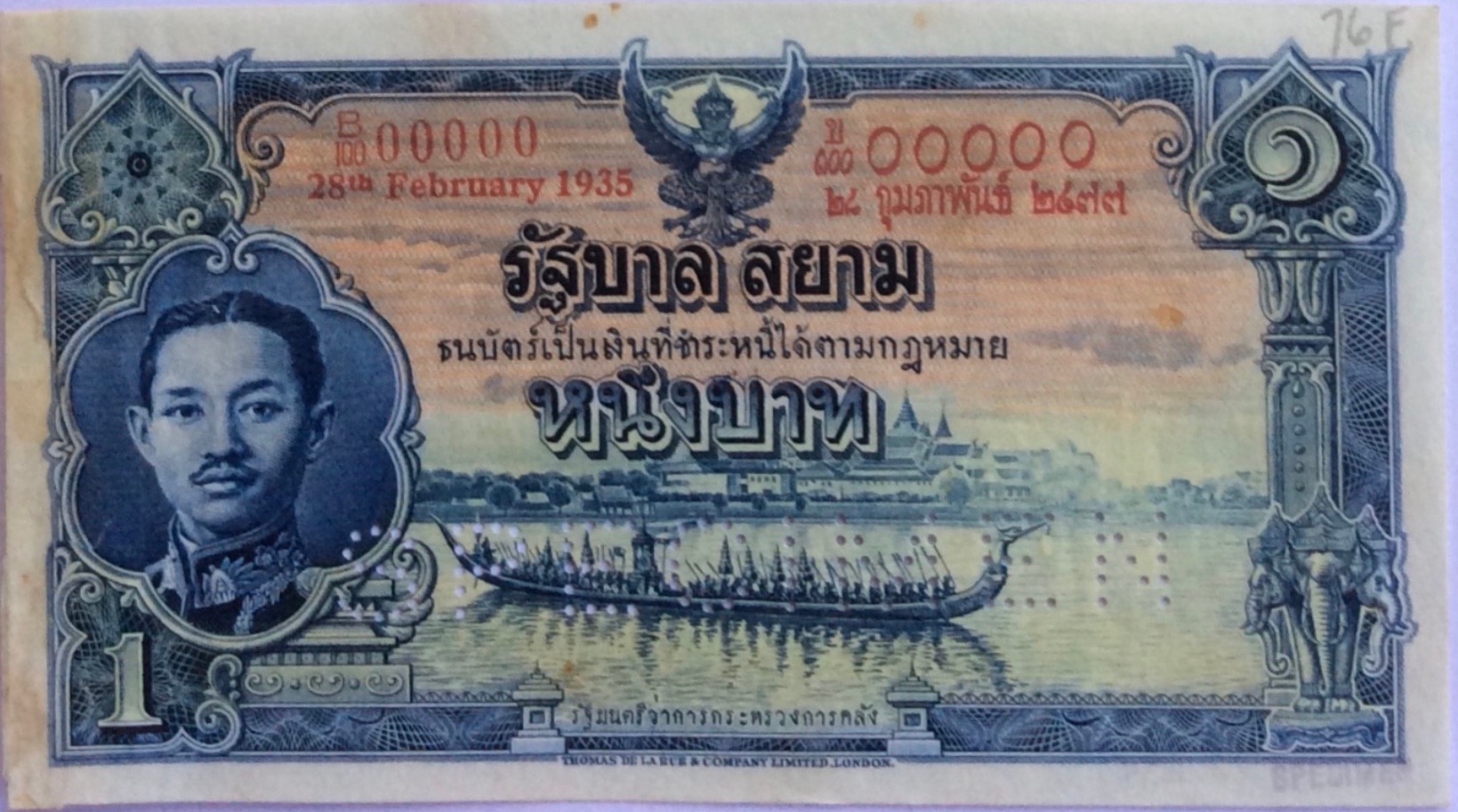 On April 2, 1935 the Siamese Minister to the United Kingdom H.E. Phya Subarn Sompati instructed TdlR to “…ante-date all Currency Notes in course of being printed prior to March 2, 1935.” The Ministry of Finance sent these instructions to H.E. Phya Subarn Sompati by telegraph. The reason was obvious. It would not be proper to have dates on the banknotes with King Rama VII’s portrait on them after the King’s abdication.
On April 2, 1935 the Siamese Minister to the United Kingdom H.E. Phya Subarn Sompati instructed TdlR to “…ante-date all Currency Notes in course of being printed prior to March 2, 1935.” The Ministry of Finance sent these instructions to H.E. Phya Subarn Sompati by telegraph. The reason was obvious. It would not be proper to have dates on the banknotes with King Rama VII’s portrait on them after the King’s abdication.
As an example all 20 Baht banknotes with prefix P/3 to P/10 dated from January 20, 1935 until February 25, 1935 are all printed after April 26, 1935. The 1 Baht banknotes with prefix B/1 to B/100 dated from November 21, 1934 to February 28, 1935 are all printed after April 1935.To fill the order of 10 million banknotes TdlR had to date the notes utilising every day from November 21, 1934 until February 28, 1935. The majority of the notes were dated prior to when the orders were given. It would be really fascinating having a collection complete with all the notes with prefix B/1 till B/100, all antedated.
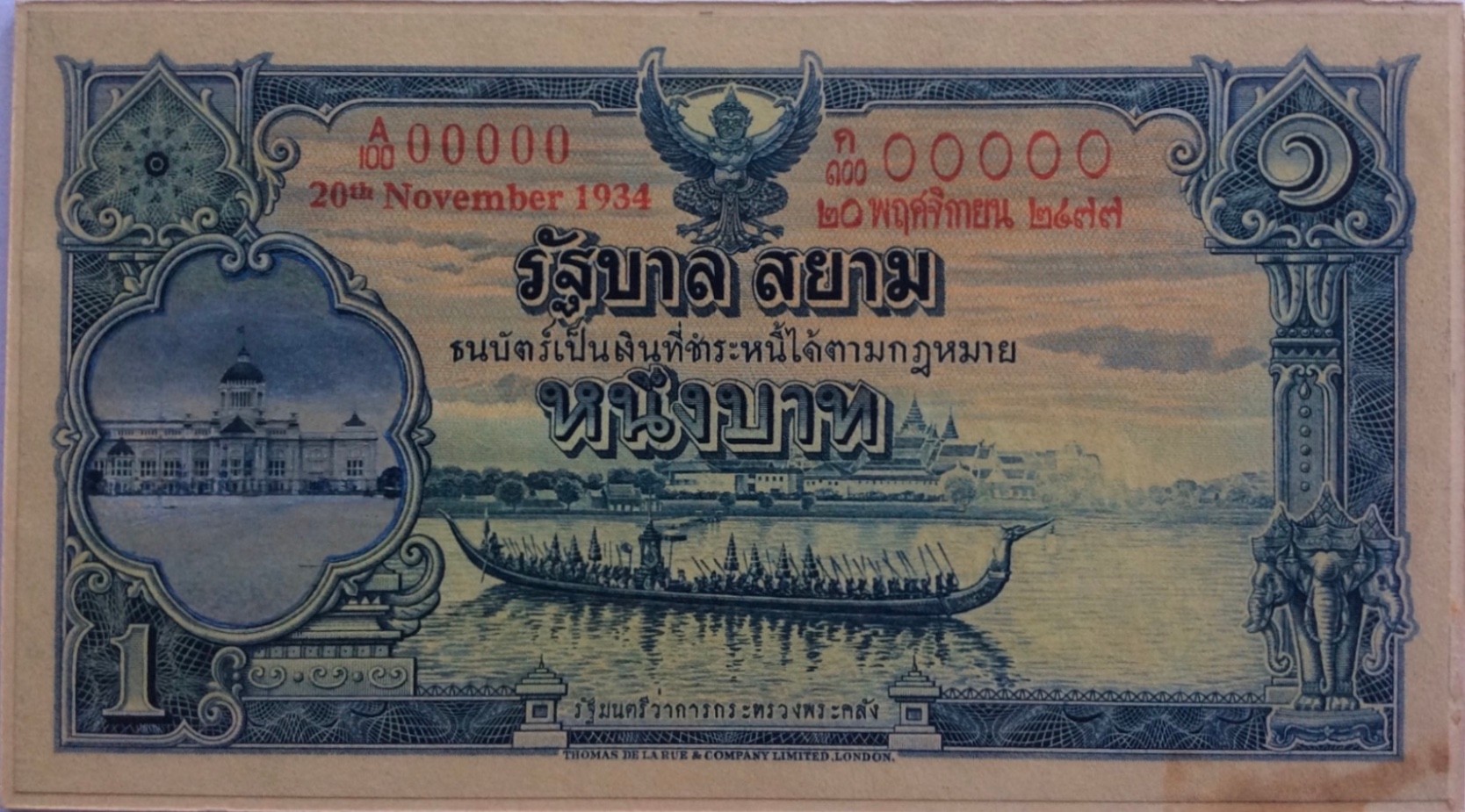 In a letter dated April 27, 1935 TdlR received new instructions from The Minister to the United Kingdom on behalf of the Ministry of Finance; “Portrait of the ex-King in circle was to be replaced by reproduction of Ananda Samakom Throne Hall (as per photograph enclosed); the rest of the design unchanged.”
In a letter dated April 27, 1935 TdlR received new instructions from The Minister to the United Kingdom on behalf of the Ministry of Finance; “Portrait of the ex-King in circle was to be replaced by reproduction of Ananda Samakom Throne Hall (as per photograph enclosed); the rest of the design unchanged.”
On May 2, 1935 TdlR confirmed to the Siamese Minister in the United Kingdom that they were preparing impressions incorporating the Throne Hall instead of the ex King’s portrait. TdlR in the letter pointed out that in their opinion “both from an aesthetic point of view and from the point of view of security against forgery, the suggested picture is not altogether suitable”. TdlR asked if it was possible to use the head of some famous personage in Siamese history.
The next day TdlR sent two impressions, one of the 1 baht value and one of the 100 Baht value, on which the portrait had been replaced by a view of the Throne Hall. To produce these TdlR had cut out the portrait on a specimen 1 Baht note with prefix A/100 dated 20th November 1934 and the specimen never issued 100 Baht with prefix E/100 dated February 11, 1933.
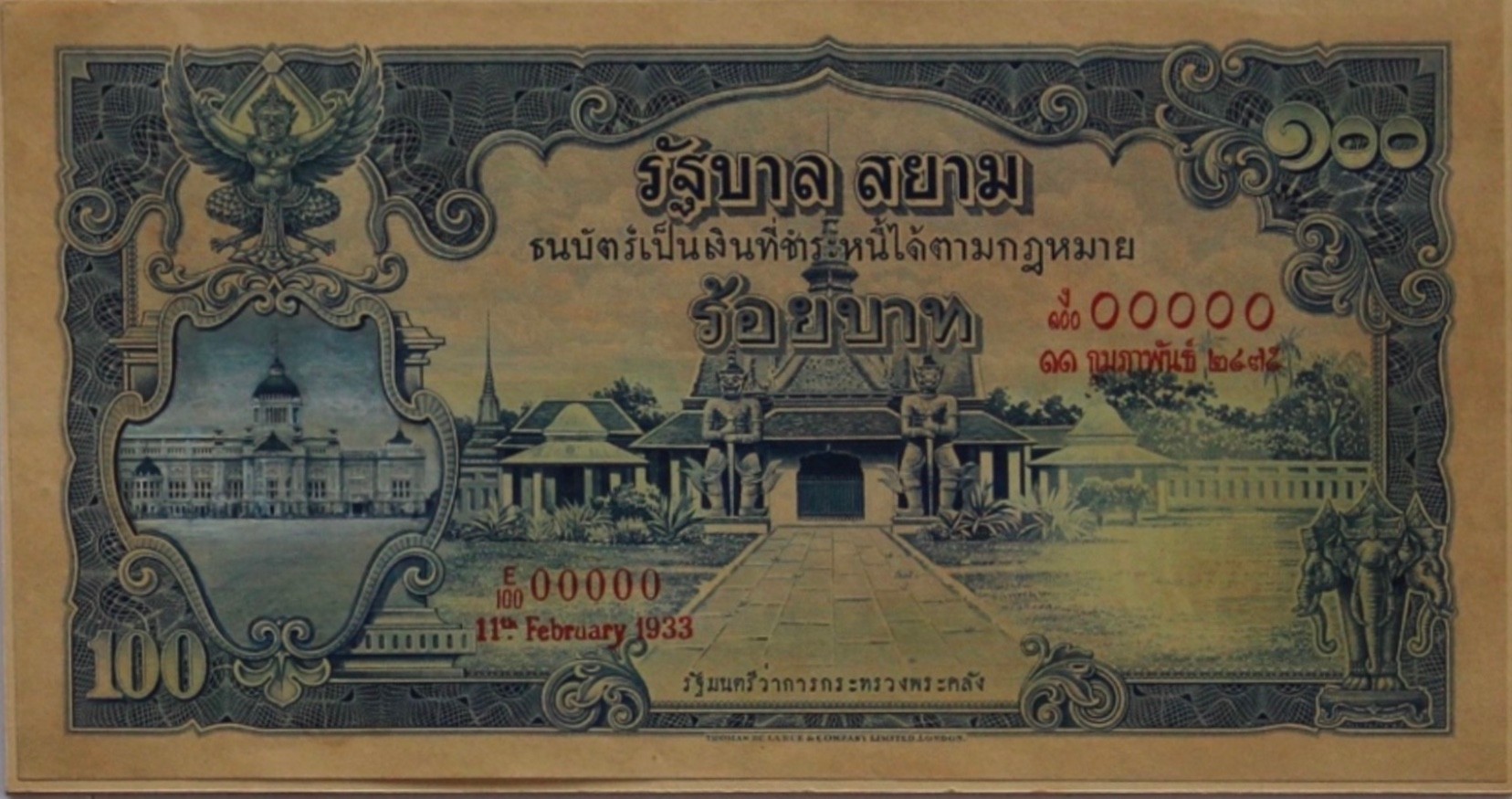
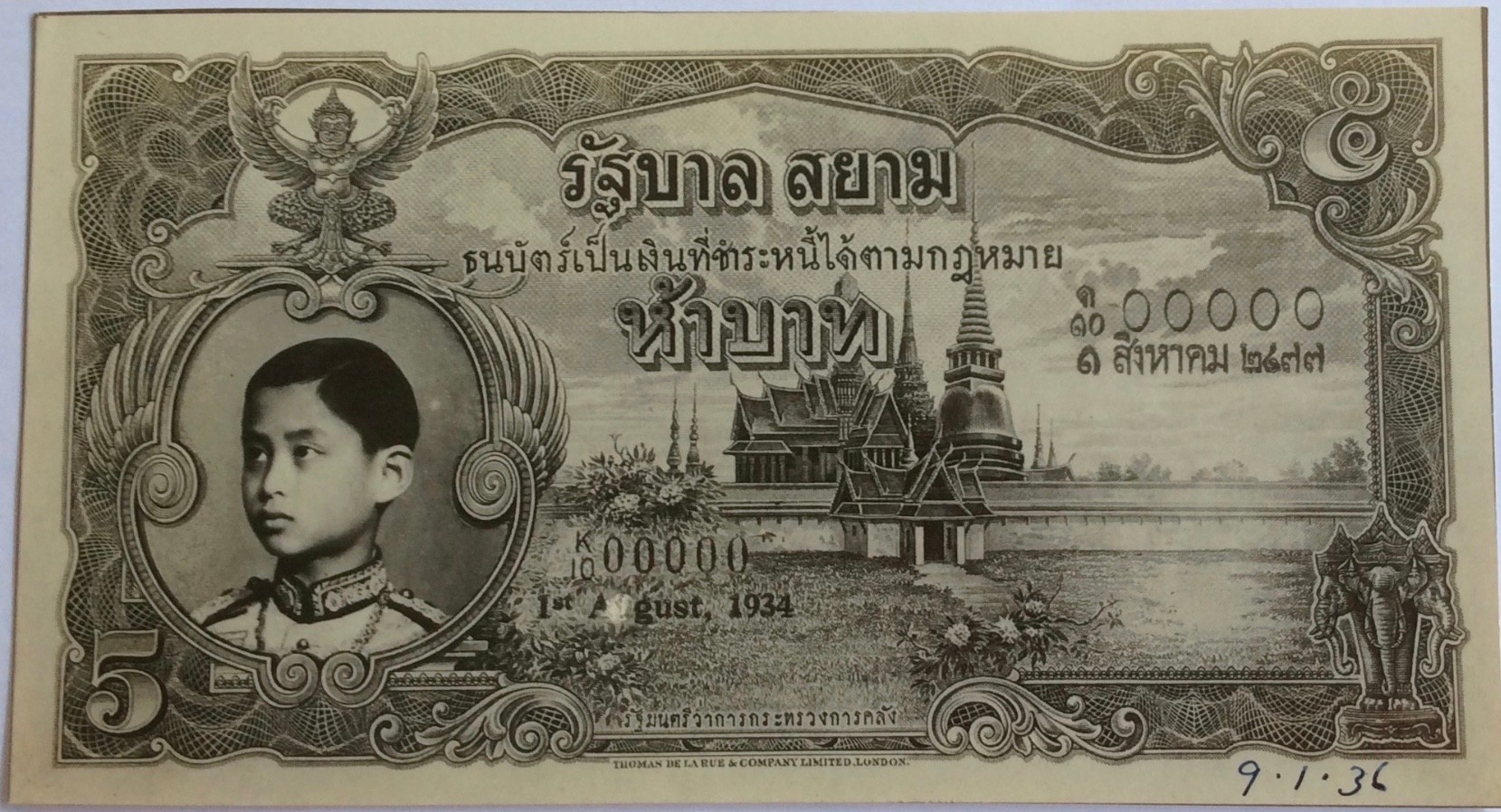 New instructions were given TdlR on October 16, 1935. The Throne Hall was to be replaced by a portrait of the present King. A photograph would be sent to TdlR directly from Lausanne by His Majesty’s Personal Secretary. TdlR received
New instructions were given TdlR on October 16, 1935. The Throne Hall was to be replaced by a portrait of the present King. A photograph would be sent to TdlR directly from Lausanne by His Majesty’s Personal Secretary. TdlR received
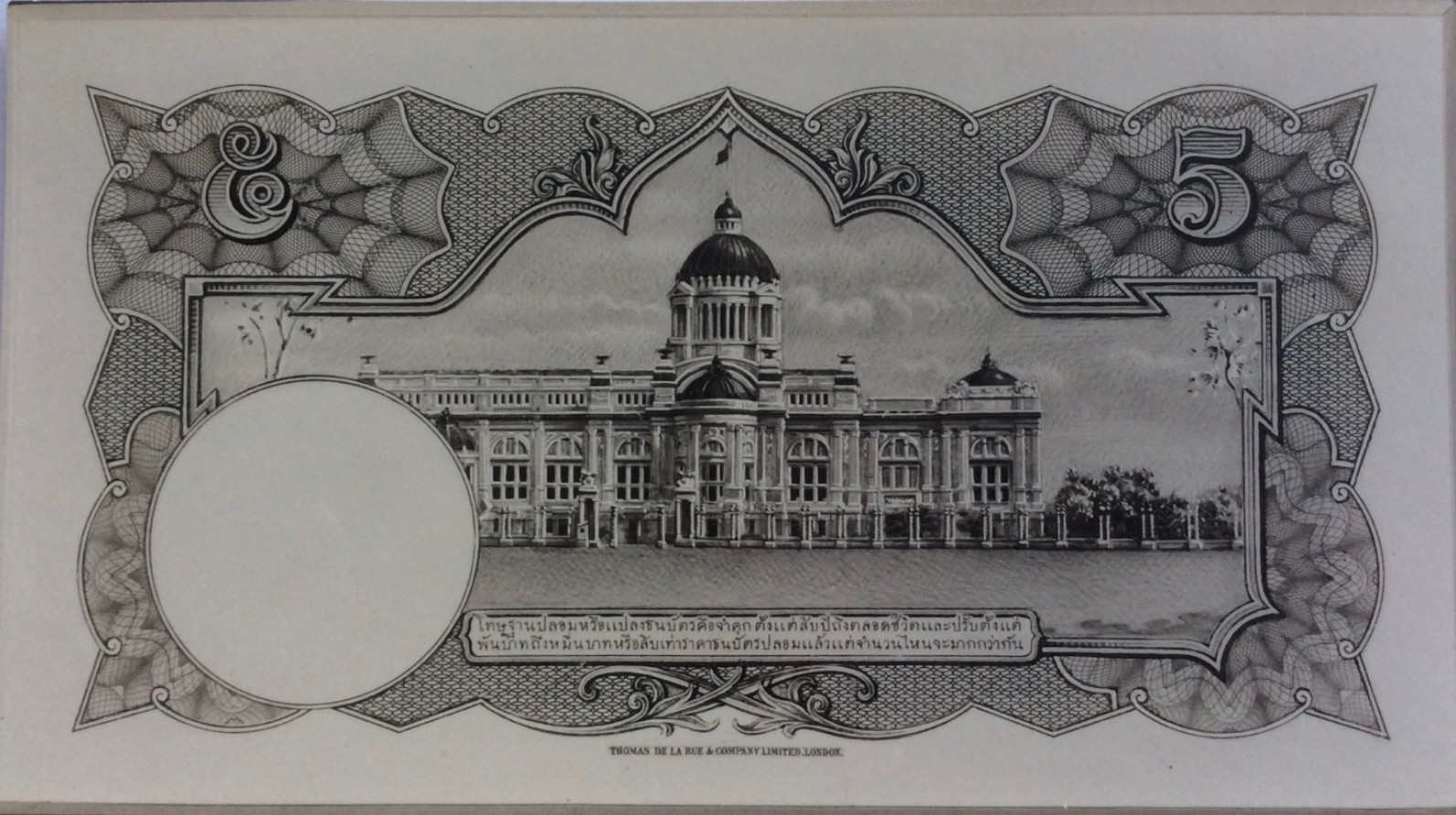 the photograph of King Ananda Mahidol, Rama VIII on December 31, 1935 and on January 2, 1936 an order for 500,000 Five Baht and 1,000,000 Ten Baht banknotes with the new portrait were placed. Photogravure of the 5 baht and 10 baht was produced dated January 9, 1935.
the photograph of King Ananda Mahidol, Rama VIII on December 31, 1935 and on January 2, 1936 an order for 500,000 Five Baht and 1,000,000 Ten Baht banknotes with the new portrait were placed. Photogravure of the 5 baht and 10 baht was produced dated January 9, 1935.
The engraving of the original portrait die would take 6 to 8 weeks. A further 6 weeks would be required to incorporate the engraving in the 10 Baht die and manufacture the new printing plates. It would therefore take 5 months before a shipment of banknotes with the new portrait could be despatched.
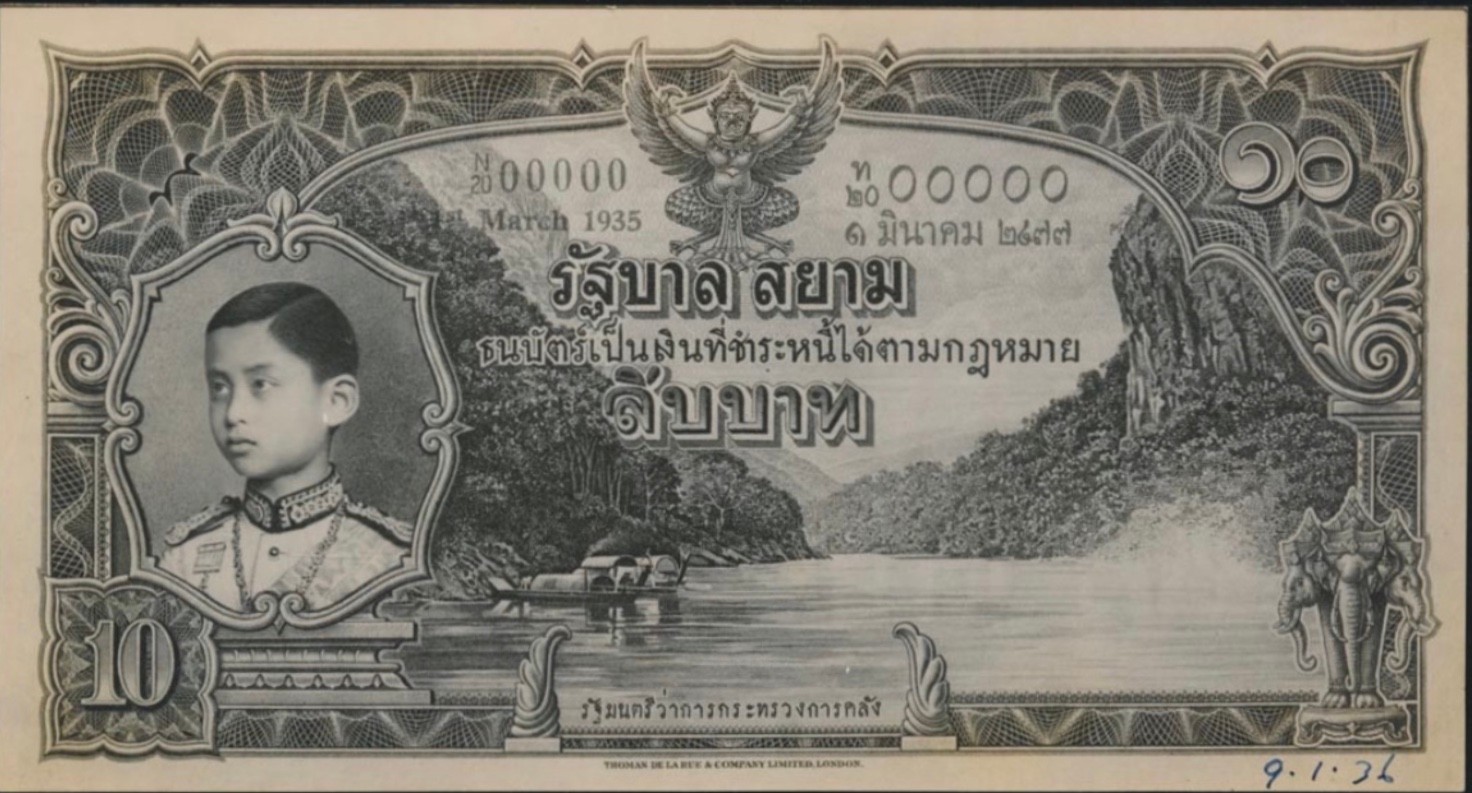
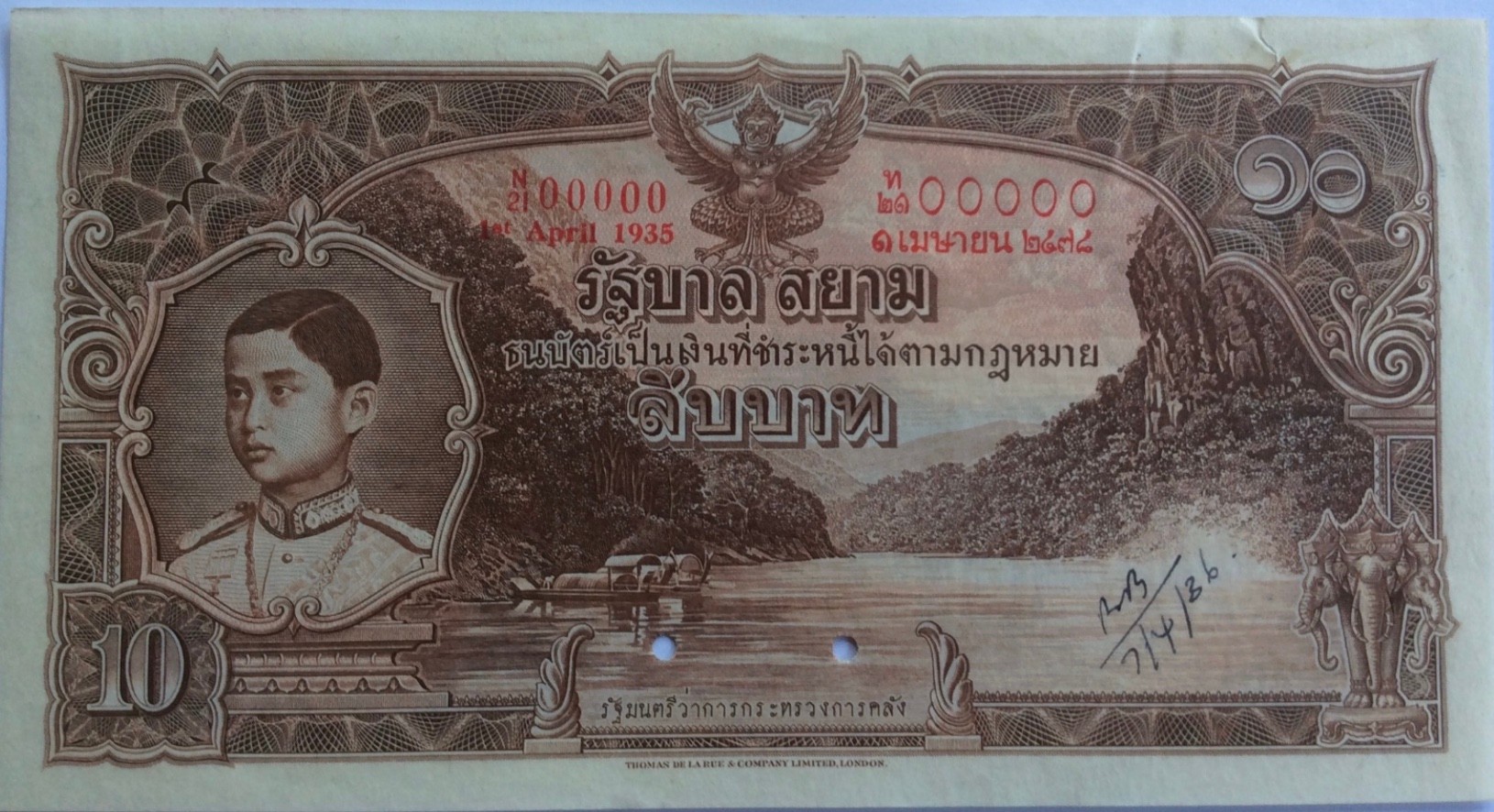
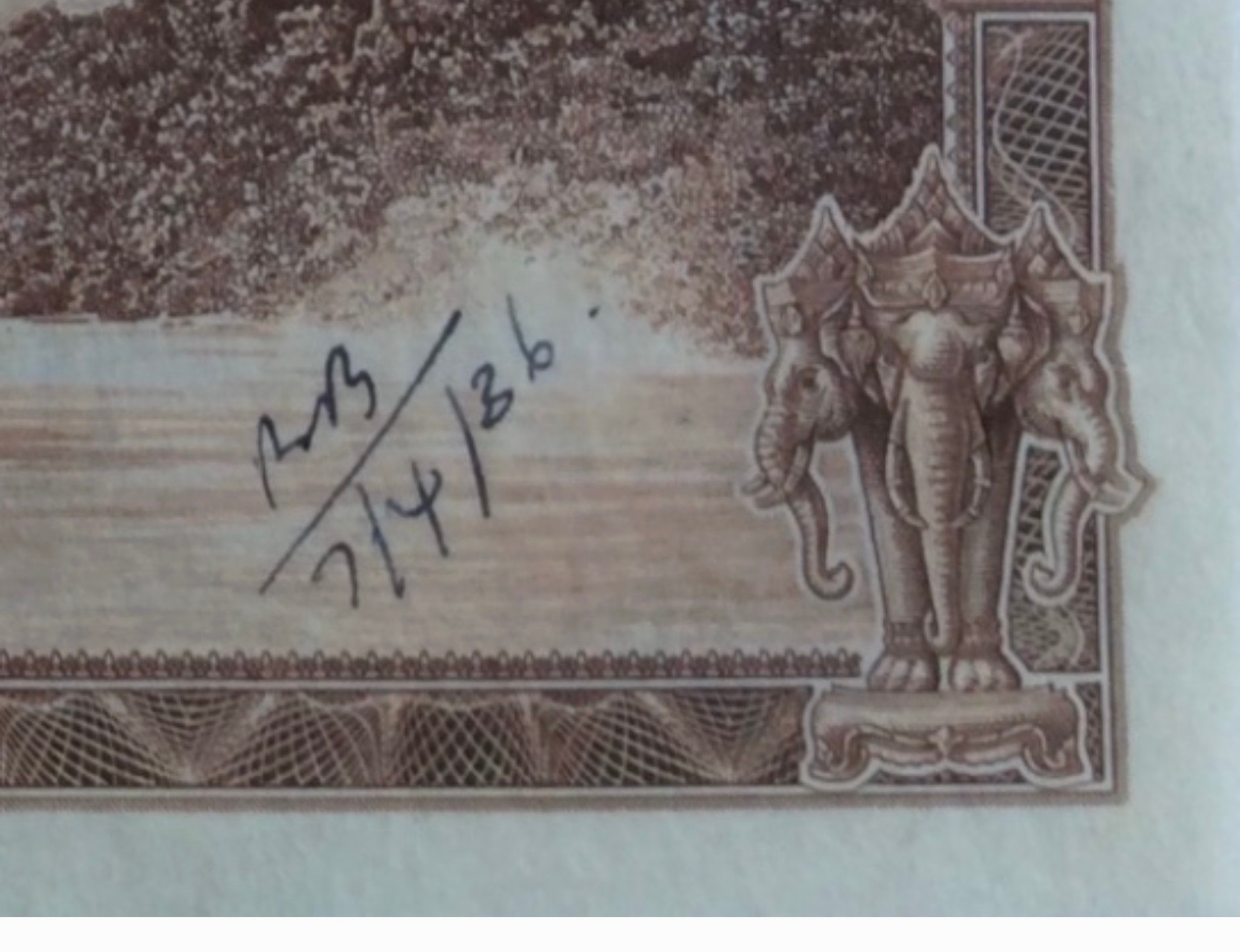 On January 18, 1936, the Ministry of Finance asked TdlR to try their utmost to ship the 10 Baht banknotes with the new portrait within 4 months. The 10 Baht was initialled as approved by the Siamese Minister to the United Kingdom H.E. Phya Rajawangsan on April 7, 1936 and announced on August 13, 1936. The 1- and 5 Baht was also announced in 1936, while the 20 Baht was first announced on December 15, 1937. These four denominations were initialled as approved by the Siamese Minister to the United Kingdom H.E. Phya Rajawangsan.
On January 18, 1936, the Ministry of Finance asked TdlR to try their utmost to ship the 10 Baht banknotes with the new portrait within 4 months. The 10 Baht was initialled as approved by the Siamese Minister to the United Kingdom H.E. Phya Rajawangsan on April 7, 1936 and announced on August 13, 1936. The 1- and 5 Baht was also announced in 1936, while the 20 Baht was first announced on December 15, 1937. These four denominations were initialled as approved by the Siamese Minister to the United Kingdom H.E. Phya Rajawangsan.
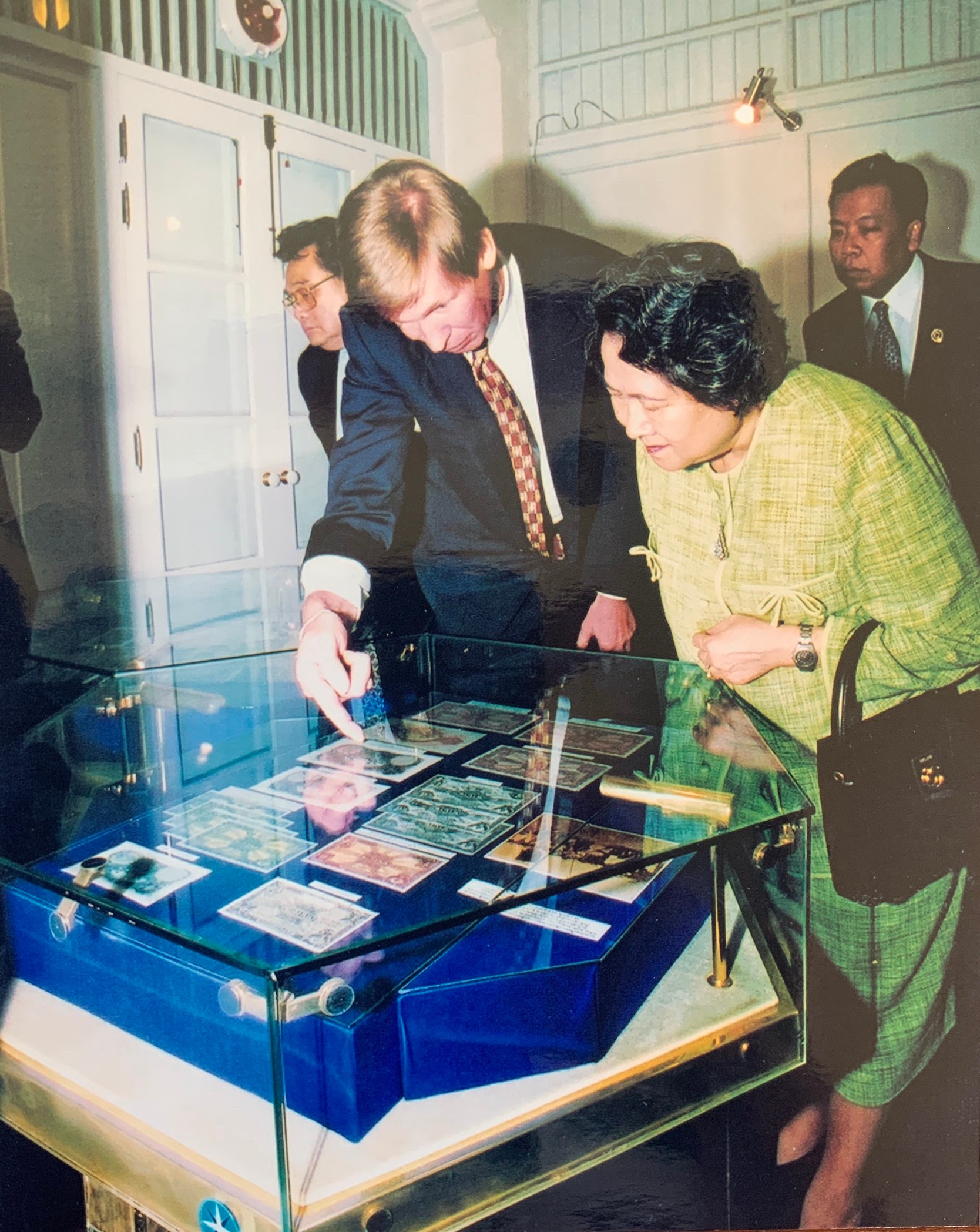
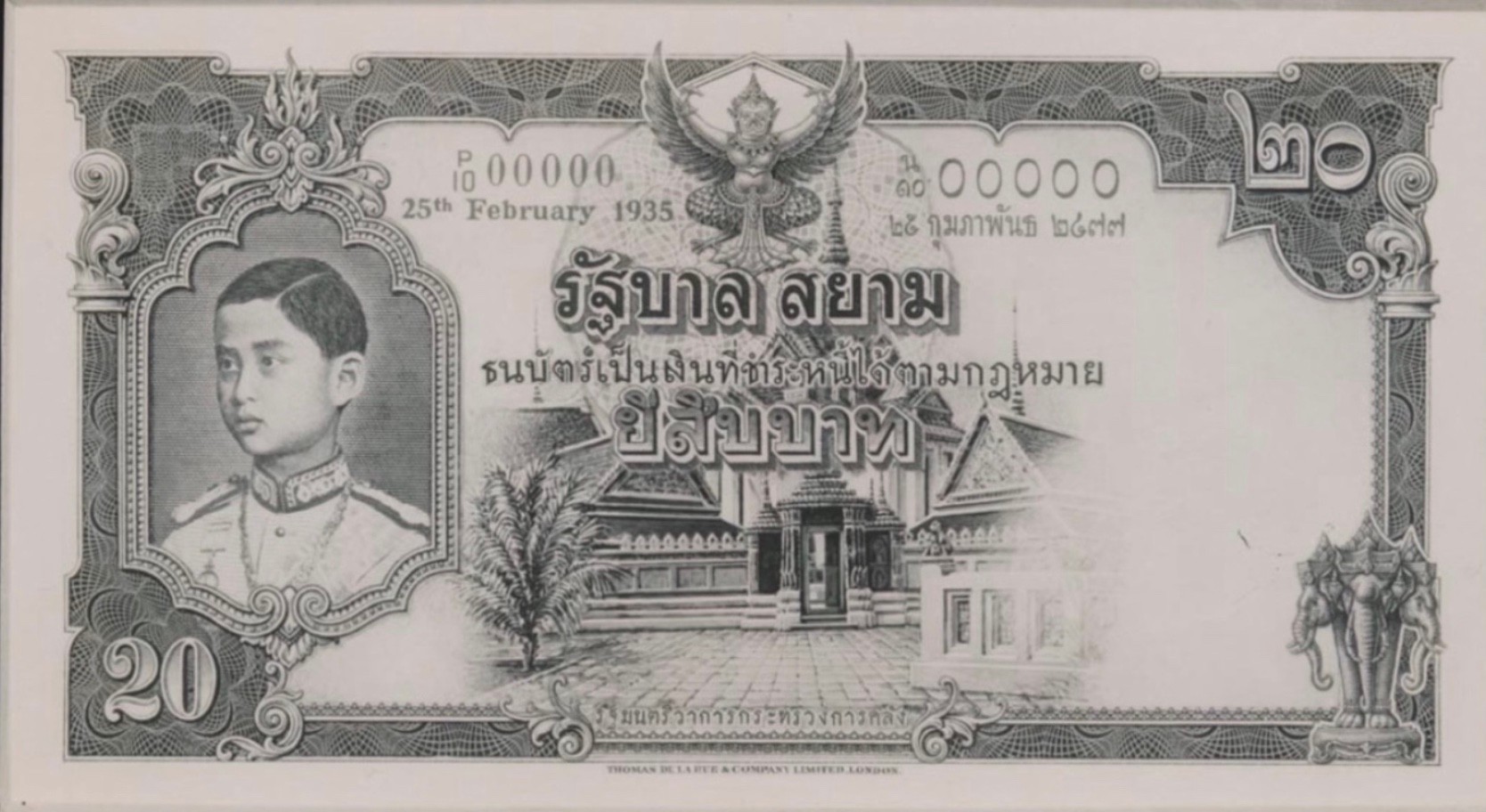
The King Prajadhipok, Rama VII, Museum opened on November 12, 2001. Part of my banknote collection was exhibited and I had the great honour to explain about the banknotes to Her Royal Highness Princess Galyani Vadhana. The Princess noted that some of the banknotes were dated prior to March 2, 1935 as her brother King Ananda, Rama VIII, was recognised as King by the National Assembly in March of 1935.
She told me they must have been quite sure her mother Princess Srinagarindra would agree that her son would be the next Thai monarch. I explained that, actually artwork and specimen banknotes are given a random date, sometimes the date of the former issue. This photogravure which was never issued was produced for the Fourth Series with the portrait of Rama VIII. It does have the prefix P/10 and the date 25th February 1935 which is the last prefix and date of the issued 20 Baht Third Series with the portrait of Rama VII.
 |
 |
 |



